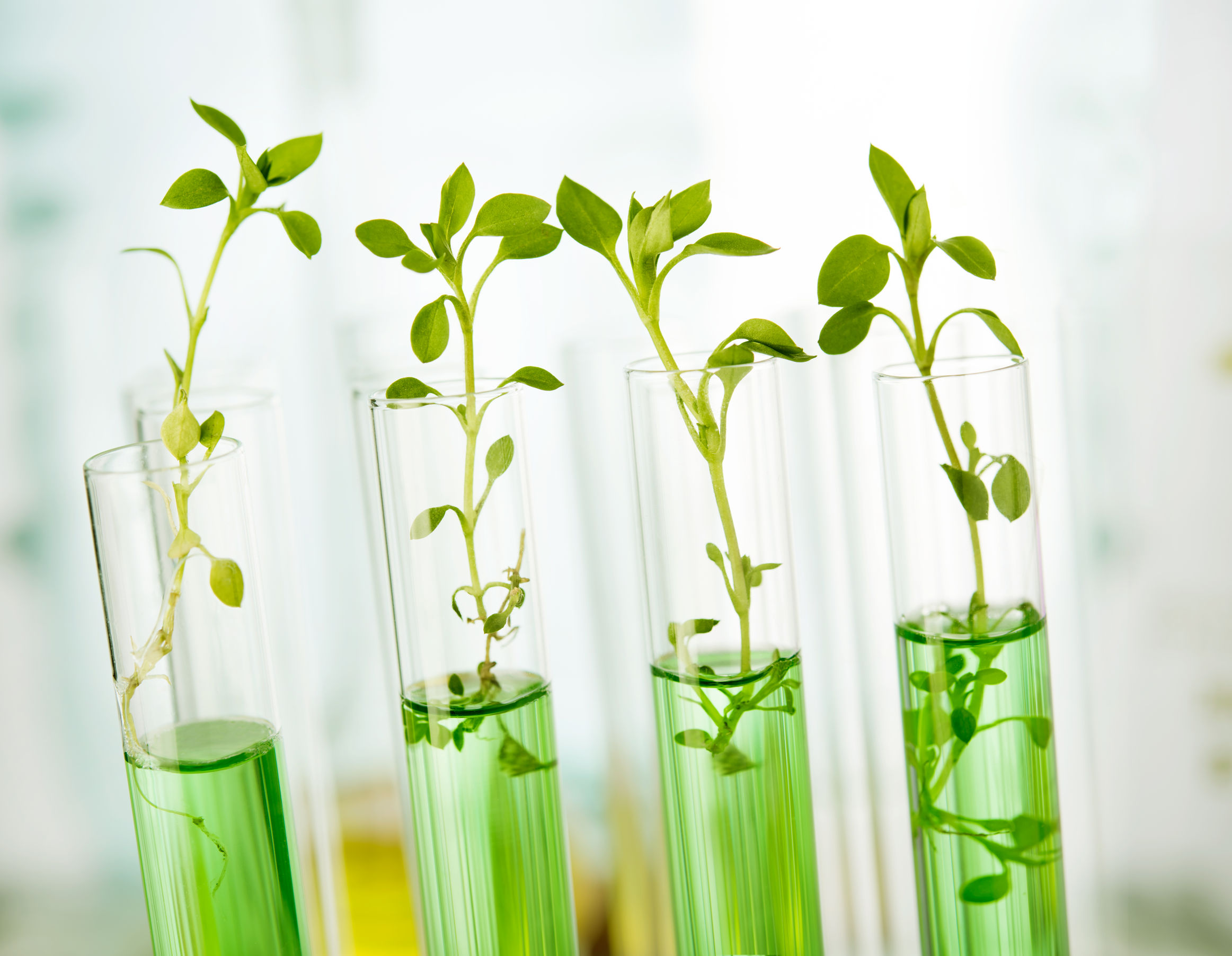Tobacco already came into focus as a green bioreactor for the large-scale production of pharmaceutical proteins (e.g. human erythropoietin, human interleukin 10, hepatitis B surface antigen, insulin and many more), of industrial enzymes (e.g. alpha-amylase, endoglucanase 1, xylanase and phytase) and of biopolymers and platform chemicals (elastin-like polypetides (ELP), spider silk proteins (spidroins), collagens, plant gums and many more). The plants can be cultivated without special demands on soil and environment on marginal land, yielding up to 16–32 tons leaf dry weight (dw) per year and ha under optimal conditions and farming practices. The plant thus does not compete with other crops.
This project will explore and promote the cultivation and use of tobacco enriched with cyanophycin as an important and economical source of protein and nutrients. Therefore we will take a look at non-food, feed applications and, as an economical and abundant biomass source, for conversion to biofuels and biomaterials.
Developing a cyanophycin-enriched tobacco plant called SL632 can deliver concrete solutions for various sustainability related challenges like increase in the global population, limitation of arable land that becomes threatened with climate change and growing environmental pollution.
The development of CGP based by-products of tobacco allows using biological resources more efficiently. So additionally to the current usage of the tobacco plant, the CGP can be converted into useful biomaterials such as polyaspartic acid and diaminobutane polymers and serves as a substitute for a wide range of currently fossil-fuel based products but also as an ingredient for the essential amino acid arginine in feed, cosmetic etc..

The tobacco variety SL632 contains significant amount of oil, protein and fiber and has demonstrated its use in biofuel, animal feed, paper and pulp. Since this plant grows in areas where staple crops cannot be grown, SL632 is not in conflict with food production and provides an alternative option for the cultivation of smoking tobacco, as well as its selection of co-product optionality, it has clear advantages over other vegetable-oil based bio-jet fuel feedstock options currently available in the market e.g. palm or soy oil.
The production of sustainable additive products in the oil producing, nicotine-free variety SL632 is thus an excellent model for novel approaches in tobacco cultivation. With 2-3 harvests per season, SL632 produces high volumes of seed and biomass. The seed is pressed out into one-third oil (suitable for biofuel, bioplastics, animal feed) and two-thirds high-protein oil-cake (excellent as animal feed integrator with 30% protein content). SL632 oil is highly suitable for use in the production of bio-diesel and bioplastics, however, it has also recently received great attention as a feedstock for sustainable bio-aviation fuel. The production of the CGP by SL632 tobacco plants and the related processing steps will provide an important contribution of modern biotechnology to the development of the bio-based economy. It will result in an up-scale of biotechnology processes and be integrated in existing industrial processes. This will allow to develop innovative, environmentally sound industrial processes for the production of bio-based products of biopolymers/biomaterials and amino acids for the food&feed industry and contribute to sustainable growth. Moreover, it integrates the production process into agricultural systems in Argentina where the tobacco plants can be introduced as an intercrop. This enriches the agricultural production system and contributes to increased agriculture crop diversity and to improved soil conservation. The by-products of the tobacco processing will be fed back into the system as organic fertilizer adding an additional contribution to the circular economy. Both, the CGP derived products as well as their use increase the sustainable production and conversion of feedstocks and bioresources and adds value to the agricultural and bio-based industry sector. The production of the tobacco will mainly take place in Argentina and other Latin American countries where the agricultural sector is of substantial importance. The production of tobacco will provide additional income opportunities for farm-households and strengthen rural development. The major markets for CGP derived products include cosmetic and domestic products, the animal feed and animal production sector.
Despite all the potential advantages of this technology, an implementation of CGP-producing SL632 is not secured as biotechnologies are generally discussed and a controversial debate exists in many countries. Moreover, the research process, its results and the implementation of outcomes are embedded in a complex environment with rapid technological developments, changing levels of information, and diverging interests and demands from different stakeholders.
We therefore address the social and environmental dimensions of biotechnology through interaction with key stakeholders (policy makers, journalists, NGOs, EU-citizens etc.) to collect information on concerns, mapping stakeholders’ knowledge, and promoting a dialogue. We gain their insights and develop reflective routines to assess, coordinate and address stakeholders’ concerns, thereby deriving practical implications for enhancing the acceptance of the project. The project-accompanying interaction with stakeholders and the general public provides a basis for the management of stakeholder relations and communication efforts.


